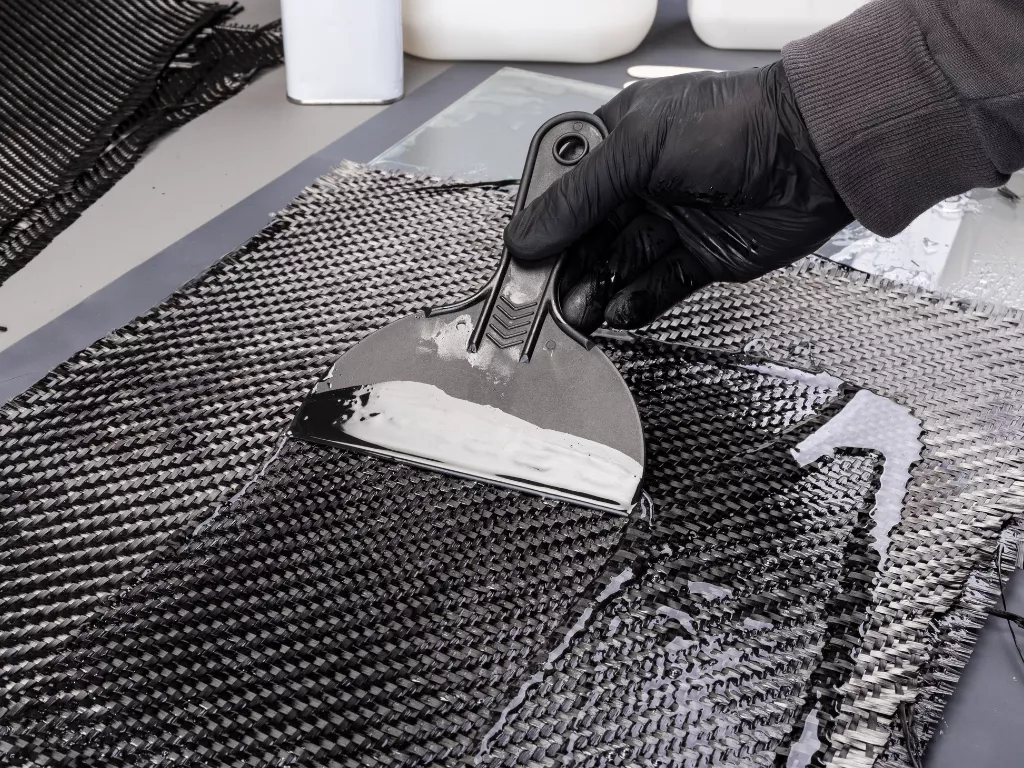Impact of Composite Materials in Modern Manufacturing and Engineering Innovation
In today's rapidly evolving industries, composite materials are reshaping the future of manufacturing and innovation. From aerospace to automotive and sports equipment, these materials offer superior strength, lightweight properties, and enhanced durability, providing unparalleled performance advantages. Recent advancements in composite material science have further expanded their applications and transformed capabilities across various sectors, making them indispensable in modern engineering and product development.

Understanding Composite Materials
Composite substances are a mixture of two or more distinct materials with varying physical or chemical characteristics combined to attain desired properties. Their ability to offer superior properties that are not achievable with individual components has made them invaluable in modern engineering and manufacturing. Recent advancements in composite material science have further expanded their applications and capabilities.
Composite substances fundamentally comprise a matrix and a reinforcement. The matrix, often a polymer, metal, or ceramic, binds the reinforcement, which could be fibers or particles, forming a unified structure. This combination creates a material that is typically stronger, lighter, and more durable than its components.
The Evolution of Composites
The history of composite materials dates back thousands of years, with examples such as mud bricks and straw-reinforced pottery. The modern era of composites began in the mid-20th century with the development of glass fiber-reinforced polymers. Since then, advancements in composites have been driven by the need for more robust, lighter, and more durable materials that can withstand extreme conditions while maintaining high performance. The aerospace and automotive industries have been at the front of composite material development, actively seeking materials that offer exceptional strength and reduced weight.
Classification of Composite Materials
Composites are primarily categorized based on their matrix material.
1. Polymer Matrix Composites (PMC)
These are the most common types, utilizing a polymer resin as the matrix. The reinforcement is typically in the form of fibers, though particles can also be used.
- Matrix: Epoxy, polyester, vinyl ester, acrylic, polyurethane, etc.
- Reinforcements: Glass fiber, carbon fiber, aramid fiber, basalt fiber, natural fibers (flax, jute, hemp), and mineral fillers.
- Examples: Fiberglass, carbon fiber reinforced plastics (CFRP), Kevlar, Glass Fiber Reinforced Polymer pipes, and composite boat hulls.
It has a high strength-to-weight ratio and superb corrosion resistance, leading to its extensive use in the aerospace, automotive, marine, construction, and consumer goods industries.
2. Metal Matrix Composites (MMC)
In MMCs, a metal is used for the matrix, while the reinforcement is often ceramic particles or fibers. Metal Matrix Composites materials are celebrated for their strength, stiffness, and ability to withstand high temperatures.
- Matrix: Aluminum, magnesium, titanium, copper, nickel, etc.
- Reinforcements: In MMC, carbon fibers, boron fibers, and silicon carbide fibers can be utilized. Titanium carbide, Al oxide, and silicon carbide particles can be reinforcement choices.
- Examples: Aluminum Matrix Composites, Titanium Matrix Composites, Magnesium Matrix Composites.
Metal Matrix Composites (MMCs) are mainly utilized in the aerospace, automotive, defense, and electronics industries because of their excellent mechanical properties and thermal stability.
3. Ceramic Matrix Composites (CMC)
As the name implies, Ceramic Matrix Composites utilize ceramic substances for both the matrix and reinforcement. These composites exhibit outstanding thermal shock resistance, creep resistance, and high-temperature strength.
- Matrix: Silicon carbide, alumina, zirconia, etc.
- Reinforcements: In CMC Alumina (Al2O3) fibers, Carbon fibers and silicon carbide (SIC) fibers can be used.
- Examples: Silicon carbide-infused fibers and matrix
CMCs find applications in environments that require high-temperature resistivity, such as aerospace, gas turbines, and nuclear reactors where extreme temperatures and mechanical stresses prevail.
4. Concrete Composites
A cement-based matrix reinforced with steel bars or fibers is combined to create concrete composites.
- Matrix: Cement paste
- Reinforcements: Steel rebars, steel fibers
Concrete composites provide outstanding compressive strength, longevity, and fire resistance. They are indispensable in constructing buildings, bridges, dams, and other infrastructure.
5. Natural Fiber Composites
Eco-friendly fiber composites use natural fibers like flax, jute, hemp, or bamboo as reinforcing components within a polymer or natural resin matrix.
- Matrix: Epoxy, polyester, natural resins
- Reinforcements: Linen fibers, jute fibers, hemp fibers, bamboo fibers.
Eco-friendly fiber composites are becoming popular because of their sustainability and renewable characteristics. They are used in the automotive, construction, packaging, and textile industries.
Recent Advancements in Composite Material Science
- Nanocomposites
In nanocomposites, nanoparticles are incorporated into the matrix. These particles are often less than 100 nanometres in size. It enhances mechanical, thermal, and electrical properties. Carbon nanotubes (CNT) and graphene are among the most studied nanoparticles, offering exceptional strength and conductivity. Nanocomposites can be used from improving structural components' durability to enhance electronic device performance. 'It's a choice for future innovations. - Bio-based Composites
As sustainability becomes a global priority, bio-based composites have gained significant attention. These composites use natural fibers like hemp, flax, or jute as reinforcements, combined with a biodegradable matrix. Commonly, this biodegradable matrix is created by bio-derived materials. Bio-based composites are a sustainable alternative to traditional composites since they reduce environmental impact while maintaining desirable properties. Research in this area focuses on optimizing the mechanical properties of bio-based composites to compete with synthetic counterparts. Applications range from automotive interiors to biodegradable packaging, highlighting their versatility and environmental benefits. - Smart Composites
A smart composite material is engineered with integrated innovative materials that enable it to sense, respond, and adapt to external conditions. The composite matrix comprises polymer, metal, or ceramic, which incorporates functional smart materials. These smart materials can modify their properties in response to changes in temperature, stress, electric fields, or other environmental factors. Smart composites can be used in fields like aerospace, where materials can autonomously adapt to changing conditions, enhancing safety and performance. Integrating shape memory alloys or piezoelectric materials into composites is a key area of research, aiming to create materials that can self-heal or change shape on demand. - 3D Printing and Additive Manufacturing
3D printing and additive manufacturing technology allow for the precise control of material distribution and orientation, optimizing the mechanical properties of the final product. Current progressions facilitate the constructing of intricate structures with customized characteristics, diminishing material excess and manufacturing duration. The ability to print with continuous fibers has expanded the potential of additive manufacturing, allowing for the creation of high-performance components previously impossible to achieve with traditional methods. - Hybrid Composites
Hybrid composites are created by combining two or more different reinforcement types of material to achieve customized material properties. By selecting reinforcements with complementary properties, hybrid composites can achieve a balance of strength, toughness, and cost-effectiveness. These materials have applications in automotive industries, where lightweight yet strong materials are crucial for improving fuel efficiency and reducing emissions.
Applications of Advanced Composites
- Aerospace
Composite materials have been integral to the aerospace industry for an extended period. Carbon fiber-reinforced polymers are extensively utilized in aircraft construction due to their strength-to-weight ratio, these materials contribute to reduced fuel consumption and emissions. - Automotive Industry
The push for sustainable and fuel-efficient vehicles has driven the automotive industry to adopt advanced composites. Lightweight materials like carbon fiber and glass fiber-reinforced polymers are used in body panels, chassis, and interior. Bio-based composites offering an eco-friendly alternative that aligns with the industry's sustainability goals. Integrating smart composites could lead to the development of self-healing or adaptive vehicle components, enhancing safety and reducing maintenance costs. - Sports and Recreation
The sports industry has embraced advanced composites for their ability to enhance performance while reducing weight. Carbon fiber composites are widely used in equipment such as bicycles, tennis rackets, and golf clubs, offering athletes a competitive edge. Smart composites have also made their way into sports equipment, with sensors integrated into materials to provide real-time feedback on performance, allowing athletes to optimize their techniques and improve their overall performance. - Construction and Infrastructure
The construction industry is using advanced composites due to their durability and corrosion resistance. Fiber-reinforced polymers are used in bridges, buildings, and infrastructure projects to extend service life and reduce maintenance costs. Smart composites can revolutionize construction by enabling self-monitoring structures that can detect damage or wear, ensuring timely maintenance and enhancing safety. - Defense
In defense, composites offer superior ballistic protection and lightweight solutions for armor and vehicle components. The development of smart composites further enhances their potential, allowing for adaptive structures that improve safety and performance in critical situations. - Future Prospects
The future of composite material science is bright, with ongoing research and development creating a way for innovations. Integrating artificial intelligence (AI) and machine learning (ML) into the composite design is expected to accelerate the discovery of new materials and optimize existing ones. Sustainability will continue to be a driving force, with bio-based and recyclable composites becoming increasingly important. Developing completely biodegradable composites can revolutionize industries by offering environmentally friendly solutions without compromising performance. As technology advances, the possibilities for composite materials are virtually limitless. From space exploration to medical applications, the potential for composites to transform industries and improve quality of life is immense.
Conclusion
Advancements in composite material science have fundamentally changed the landscape of modern engineering and manufacturing. The development of nanocomposites, bio-based composites, smart composites, and innovative manufacturing techniques has expanded the capabilities and applications of these materials. As research continues to push the boundaries, composite materials will play an increasingly vital role in addressing global challenges, from sustainability to technological innovation. The future of composite material science promises exciting opportunities for industries and society, shaping a world where materials are stronger, lighter, smarter, and more sustainable.
How Decos can help Clients
Decos can offer a range of services related to composite materials to clients, leveraging our expertise in product engineering and sustainability. 'Here's how we can help:
1. Product Development and Innovation
Our team of expert engineers can assist in developing innovative composite material products. We handle everything from the initial concept to the final product, ensuring the solutions align with your business objectives. This includes:
- Material Selection: Identifying the best composite materials for your specific application.
- Design and Prototyping: Creating detailed designs and prototypes to test and refine your product.
- Testing and Validation: Conducting rigorous testing to ensure the product meets all necessary standards and performs as expected.
2. System Engineering Solutions
We provide comprehensive system engineering solutions and services that cover the entire lifecycle span of system development:
- Integration: Make sure the perfect integration of composite materials into existing products or systems.
- Optimization: Enhancing the performance and efficiency of your systems using advanced composite materials.
- Maintenance: Offering ongoing support and maintenance to ensure long-term reliability and performance.
3. Sustainability and Environmental Impact
At Decos, we are committed to sustainability. We can help you develop composite material solutions that are not only effective but also environmentally friendly. Our services include:
- Sustainable Material Sourcing: Identifying and sourcing composite materials that have a lower environmental impact.
- Lifecycle Analysis: Conducting lifecycle assessments to understand and minimize the environmental impact of your products.
- Recycling and Reuse: Developing strategies for recycling and reusing composite materials to reduce waste.
4. Custom Solutions
We understand that every client has unique needs. Our team is skilled at developing custom solutions tailored to your specific requirements. This includes:
- Bespoke Engineering Services: Providing tailored engineering services to meet your unique challenges.
- Collaborative Approach: Working closely with your team to ensure our solutions perfectly align with your goals.

This article is written by Bhuvan Chouhan, Mechanical Engineer at Decos. He specializes in sustaining activities, focusing on the ongoing maintenance and support of product development. His responsibilities include ensuring that existing products remain functional, up-to-date, and compliant with industry standards and customer expectations. Bhuvan's expertise covers product development, post-launch issue resolution and collaborating with cross-functional teams to maintain product longevity and efficiency.
Decos is a cutting-edge technology services partner, addressing diverse industry needs across various, including medical domain. If you have any questions or would like advice on your project or proof of concept (POC), contact Devesh Agarwal. We'd love to connect with you!
Discover more

Transforming Instructions for Use (IFU) with AI: Enhancing Technical Documentation

Reducing Latency in Real-Time Medical Monitoring to enhance speed, accuracy and patient safety.

